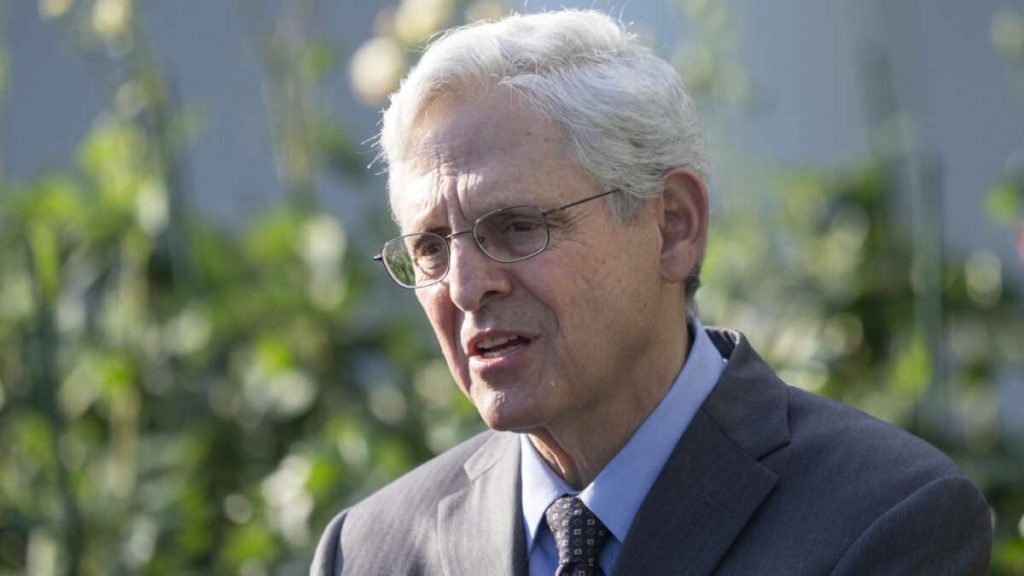Just a few years ago, the Drug Enforcement Administration (DEA) successfully fended off another in a series of petitions asking it reclassify marijuana under the Controlled Substances Act (CSA). In that case, the DEA reiterated its long-standing position that removing marijuana from Schedule I, the most restrictive category, would require the sort of evidence that is necessary to win approval of a new medicine by the Food and Drug Administration (FDA). In August 2021, the U.S. Court of Appeals for the 9th Circuit dismissed a lawsuit challenging that position, saying the petitioners had failed to exhaust their administrative remedies.
Last week, when the DEA posted a proposed rule that would move marijuana to Schedule III, it looked like the agency had reconsidered its contentious interpretation of the CSA. But as Columbia University law professor David Pozen notes, several pieces of evidence suggest that is not the case. Instead it seems that Attorney General Merrick Garland overrode the DEA’s resistance to achieve the outcome that the Department of Health and Human Services (HHS) recommended last August. That recommendation was the result of a review that President Joe Biden ordered in October 2022, and it comported with his judgment that marijuana’s Schedule I status “makes no sense.”
Biden was right about that. To qualify for Schedule I, a drug is supposed to have “a high potential for abuse” compared to the drugs in Schedules III through V and, unlike Schedule II drugs, “no currently accepted medical use in treatment in the United States.” Schedule I drugs are also supposed to be so dangerous that they cannot be used safely even “under medical supervision.” As Biden noted in 2022, “we classify marijuana at the same level as heroin” and treat it as “more serious than fentanyl,” which does not pass the laugh test.
Although the CSA lays out three criteria for Schedule I, the DEA maintained that marijuana had to stay in that category as long as it had no “currently accepted medical use.” It defined that phrase narrowly, requiring actual FDA approval or research extensive and rigorous enough to meet the agency’s criteria for safety and efficacy.
HHS rejected that test when it recommended that marijuana be moved to Schedule III, a category that includes prescription drugs such as ketamine, Tylenol with codeine, and anabolic steroids. Instead it relied on a definition of accepted medical use that took into account “widespread clinical experience associated with various medical conditions recognized by a substantial number of jurisdictions across the United States.” It found “credible scientific support” for marijuana’s use in the treatment of pain, nausea and vomiting, and “anorexia related to a medical condition.”
HHS also noted that “the risks to the public health posed by marijuana are low compared to other drugs of abuse,” such as heroin (Schedule I), cocaine (Schedule II), benzodiazepines like Valium and Xanax (Schedule IV), and alcohol (unscheduled). Although “abuse of marijuana produces clear evidence of harmful consequences, including substance use disorder,” HHS said, they are “less common and less harmful” than the negative consequences associated with other drugs. It concluded that “the vast majority of individuals who use marijuana are doing so in a manner that does not lead to dangerous outcomes to themselves or others.”
In light of the rescheduling proposal announced last week, you might surmise that the DEA has come around on all of these issues. But although the HHS recommendation was addressed to DEA Administrator Anne Milgram, the response is framed as a decision by Garland, who has direct authority to reschedule drugs under the CSA. The attorney general has traditionally delegated that authority to the DEA, which is part of the Justice Department. But in this case, Garland seems to have taken that power back in response to recalcitrant drug warriors.
The proposed rule was posted by the DEA, and it has a DEA docket number. But it is signed by Garland rather than Milgram, and it begins, “The Department of Justice (‘DOJ’) proposes…” As Pozen notes, scheduling changes usually are signed by the DEA administrator and begin, “The Drug Enforcement Administration (DEA) proposes…” He links to recent examples here, here, and here.
According to the proposed rule, “the Attorney General concurs with HHS’s conclusion” that marijuana has currently accepted medical uses. “The Attorney General” also “concurs with” the assessment that “marijuana has a potential for abuse less than the drugs or other substances in schedules I and II.” And “the Attorney General” agrees that “the abuse of marijuana may lead to moderate or low physical dependence, depending on frequency and degree of marijuana exposure.”
Does the DEA agree with those propositions? Apparently not. “DEA has not yet made a determination as to its views of the appropriate schedule for marijuana,” the proposed rule says.
All of these clues are consistent with reports that DEA officials were unhappy with the HHS recommendation. In March, for example, The Wall Street Journal reported that “federal officials are at odds over President Biden’s push to loosen restrictions on marijuana, a move some in the White House hope to see ahead of an election in which he needs the support of younger voters.” Citing “people familiar with the matter,” the Journal said DEA officials were “resistant, saying the drug’s medicinal benefits remain unproven and that it has a high potential for abuse.” Those internal arguments help explain why nine months elapsed between the HHS recommendation and its official acceptance.
On the same day that Garland proposed moving marijuana to Schedule III, Pozen notes, the Justice Department released an April 11 opinion from its Office of Legal Counsel (OLC) on the question of what qualifies as “accepted medical use.” The opinion sides with HHS rather than the DEA. “The approach that the Drug Enforcement Administration currently uses to determine whether a drug has a ‘currently accepted medical use in treatment in the United States’ under the Controlled Substances Act is impermissibly narrow,” the OLC says. “An alternative, two-part inquiry proposed by the Department of Health and Human Services is sufficient to establish that a drug has a ‘currently accepted medical use’ even if the drug would not satisfy DEA’s current approach.”
Milgram would rather not discuss any of this. On May 7, a week after the Justice Department confirmed that it had accepted the HHS recommendation, Milgram declined to answer a congressional subcommittee’s questions about marijuana’s pending reclassification. “Since DEA is ultimately the decider of scheduling and rescheduling, and the DEA administrator is in that role,” she said, “it would be inappropriate for me to make comments about this process or parts of that process.”
In this case, it looks like the DEA was not “ultimately the decider.” It is “pretty clear,” Pozen thinks, that the DEA “has, in fact, continued to resist the rescheduling of marijuana.”
Pozen argues that the DEA never should have been entrusted with scheduling decisions to begin with, because “it’s an ‘anti-drug’ agency with a deep material and ideological investment in prioritizing criminal responses to drug problems.” Although HHS is supposed to guide those decisions by making scientific determinations, the DEA is not required to accept its policy recommendations.
“The scientific and medical determinations that underlie HHS’s ‘currently acceptable medical use’ recommendation are binding on DEA, but only until the initiation of formal rulemaking proceedings to schedule a drug,” the OLC says. “Once DEA initiates a formal rulemaking, HHS’s determinations no longer bind DEA, but DEA must continue to accord HHS’s scientific and medical determinations significant deference, and the CSA does not allow DEA to undertake a de novo assessment of HHS’s findings at any point in the process.”
That leaves the DEA considerable leeway to decide where a given substance belongs. Although CSA criteria are ostensibly based on scientific assessments, the DEA’s scheduling decisions are apt to be influenced by its anti-drug ideology. Otherwise it would be hard to explain why the DEA spent half a century stubbornly defending a classification that the president rightly says “makes no sense.”
In acknowledging that point, of course, Biden was not driven purely, or even mainly, by respect for logic or scientific evidence. As the Journal noted, Biden is trying to motivate younger voters whose turnout could be crucial to his reelection, hoping his moves toward “marijuana reform” will encourage them to overlook his long record as a gung-ho drug warrior. Since those voters overwhelmingly favor marijuana legalization, which Biden opposes, that is a tough sell. Hence his hyperbole about the practical impact of rescheduling.
The HHS recommendation, which reversed the department’s previously steadfast agreement with the DEA, and Garland’s response to it, which fit his boss’s preferences, likewise were clearly influenced by politics. After Biden decided, at least partly for political reasons, that marijuana did not belong in Schedule I, his underlings fell in line. Perhaps we should give the DEA credit for sticking to its anti-pot convictions, however gravely mistaken they may be.
The post The Evidence Suggests the DEA Still Has Not Come Around on Rescheduling Marijuana appeared first on Reason.com.







